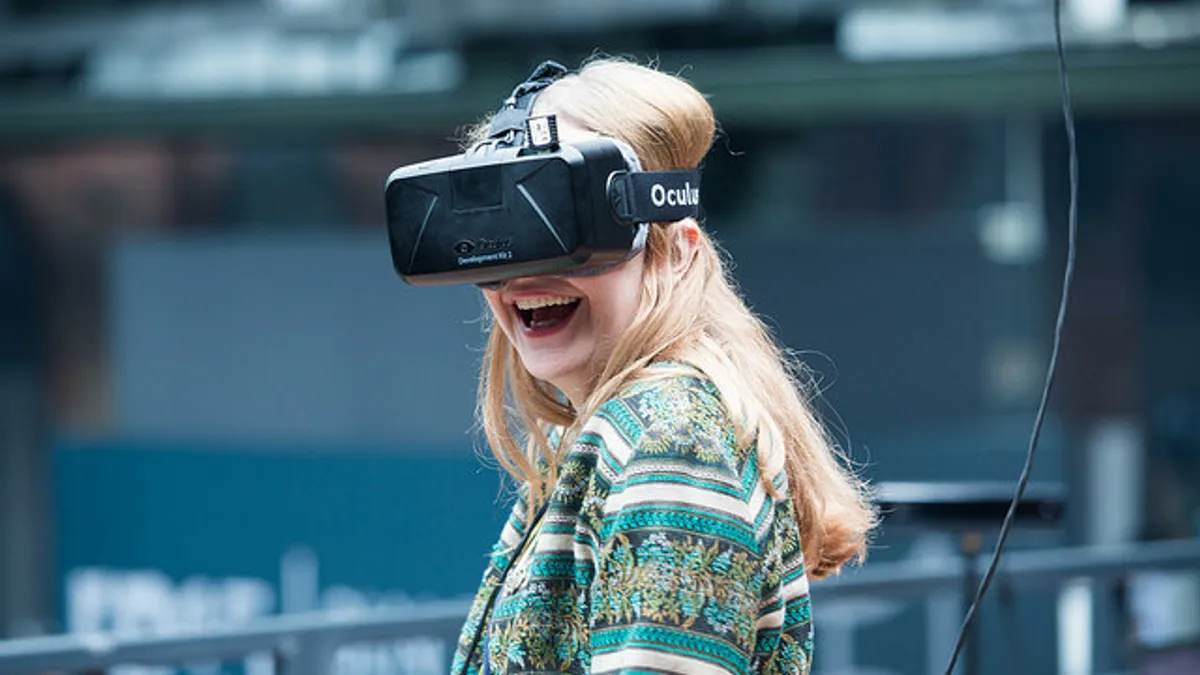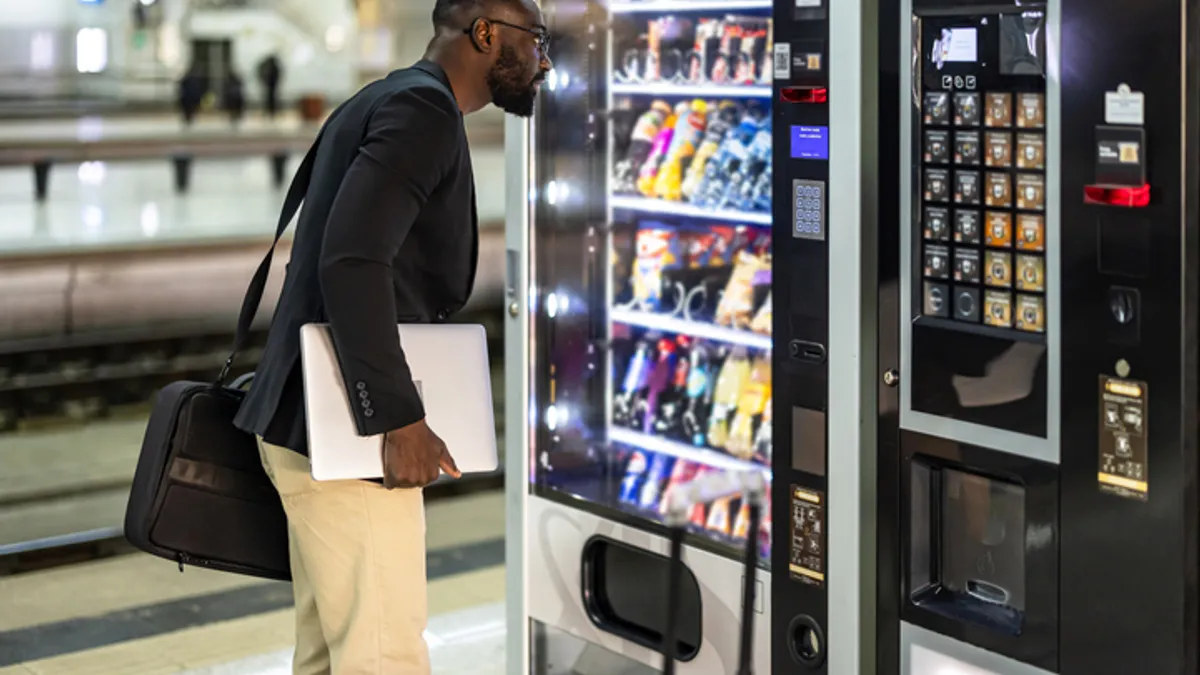Businesses, government agencies and educators across the country are recalibrating the workforce. To meet the needs of an increasingly digital workspace, upskilling and continuous learning have never been more important. But what's on the horizon in the learning sphere? We asked experts for their view from the trenches and found some learning trends to watch for in 2019.
#1: Recalibrating learning
Employee education needs a new approach as the market continues to change and the digital revolution squeezes businesses and workers, according to Sarah Franklin, EVP and GM of Trailhead and developer relations at Salesforce. "Traditional corporate learning techniques and tools simply won't cut it," she told HR Dive in an email.
"Companies have an opportunity to go one layer deeper and understand the role of new technologies, cultivate the skill sets needed within organizations and introduce new approaches to retraining and re-skilling the existing workforce," she said. Franklin said she believes continuous learning supported with feedback and motivation is more critical than ever to keep pace with rapid technology changes and movement within businesses.
For Christine Kensey, director of training at Phenom People, this means personalizing learning and training programs to serve employees. "L&D is about evolving training techniques from the one-size-fits-all mold. No two learners are alike," Kensey told HR Dive via email. "Adaptive learning shatters the old mold by personalizing the experience to the learner's path and pace." This makes learning more focused, relevant and effective, she said.
#2: Blending work and learning
"Performance adjacent learning — learning with minimal disruption to the workflow to enable problem solving and learning at the moment of need — will continue to be a huge trend in 2019," Karen Hebert-Maccaro, chief learning experience officer at O'Reilly Media, said in an email. She suggested this will introduce ubiquitous learning — an emphasis on learning as a part of the process of work.
For this to work, however, tech will need to keep pace, she said: "To enable this type of learning, technologies like natural language processing, precision search and modularized content that will allow the user to hop in, find what they need and hop back out will be key."
This technology may herald an entirely new learning environment, Kensey said. "We're moving away from training cultures to learning cultures; two distinctly different methods," she said. "For me, learning is about developing curious, creative and adaptive professionals who are ready to face the uncertainty the future holds. In today's knowledge economy, growth and innovation will not and cannot be driven simply by the top."
#3: On-demand training
As learning integrates itself into the normal flow of work, employees will likely crave flexible professional development options, Cory Eyler, vice president and general manager at ed2go, a Cengage Company, said in an email.
These options could range from mobile adaptability to self-paced environments or some combination thereof. "On-demand training continues to be a top priority now and going into 2019," he said. "We live in a digital-first economy and learning delivery has to adjust accordingly."
#4: More learning partnerships
The coming year will produce more learning-focused partnerships, predicts Christopher Cummings, VP of learning at Cengage. "I expect we'll see more employer/higher-ed institutional partnerships to ensure what students learn in class authentically prepares them for what they need to secure a job and be successful in the workforce," he said.
Cummings also suggested some of these partnerships will be driven by demands from the learner, and rightfully so, he said. "There are growing options when pursuing education. As such, the learner holds a lot of power."
#5: VR and AR advance
New interfaces, such as voice technology, will find their way into learning products and experiences, enabling learners to "converse" with their sources of learning without a keyboard or touch based device, according to Hebert-Maccaro.
"It is an exciting time in learning technology in general," she said. "In 2019, I expect we will see some really creative uses of augmented reality in learning and development to enable ubiquitous learning. I also think it is possible that virtual reality technology will become more accessible to other fields and industries to allow for low-risk experimentation."
Kensey said she thinks the learning market will see more AR and VR in the new year. "Any instance from customer service to complex technical training can be standardized and scaled across organizations using AR and VR," she said. The technologies may still be slow to adopt, she cautioned. Organizations that get ahead of this learning curve are going to position themselves to deliver the most efficient L&D in 2019, she said.
Learning professionals may see more from learning tech beyond the sphere of AI, AR and VR, Hebert-Maccaro said. "As the technology of wearables and hearables further develop, I believe it will merge with the desire for ubiquitous and continuous learning," she said. "Together we can imagine a future where our smart watches not only tell us it's time to stand or drink water but to get in our 10 minutes of learning. A future when our smart glasses provide definitions and the ability to tag a resource for consumption later with an eye movement. A learning ecosystem will emerge that will benefit from AI technologies still in development today and which will make learning an integrated behavior in our daily lives."
#6: Big data drives learning
Many companies are now leveraging data to identify personalized learning needs, define strengths and weaknesses, and develop metrics around employee training. "Big data is [a] buzzword for good reason," Eyler said. "More industries are taking the 'data-driven approach' to problem solving and learning isn't far behind."
While AR and VR may standardize training across even the biggest, widespread companies, AI will personalize those processes for the individual employee. "What microlearning was in 2018, adaptive learning will be in 2019 as AI drives personalization on all technology platforms," Kensey said.
Using the same tools platforms like Netflix use to suggest films, technology can observe what users have done and are doing, and predicts what they will do or what they need based on their interactions. "Training programs will suggest other content for learners based on what makes the most sense for their learning needs," Kensey said. She has predicted AI will continue to infiltrate educational technology platforms. By doing so, AI will recognize how someone learns and retains new information, adapting content to meet the learner's needs.
Hebert-Maccaro has spotted a similar trend: "Adaptive learning platforms and experiences will start to emerge as a standard in the industry, providing smart and personalized responses to [a] user's behaviors and assessments."
#7: Making metrics work
Learning behavior — such as non-linear and linear learning or learning that seeks to broaden versus that which seeks to deepen knowledge — will become significant metrics in learning measurement, according to Hebert-Maccaro. Learning professionals will be interested in understanding proficiency and progress of their learners by tracking their behavior and engagement with learning experiences.
Performance adjacent learning, she added, and the tools that support it change the perception of L&D in organizations, will force the event/program-centric era into the past and will release learning professionals from the fruitless chase after ROI metrics that hardly ever yielded results.
Correction: A previous version of this story referenced an outdated title for Karen Hebert-Maccaro. The story has been updated with information provided by the company.





















